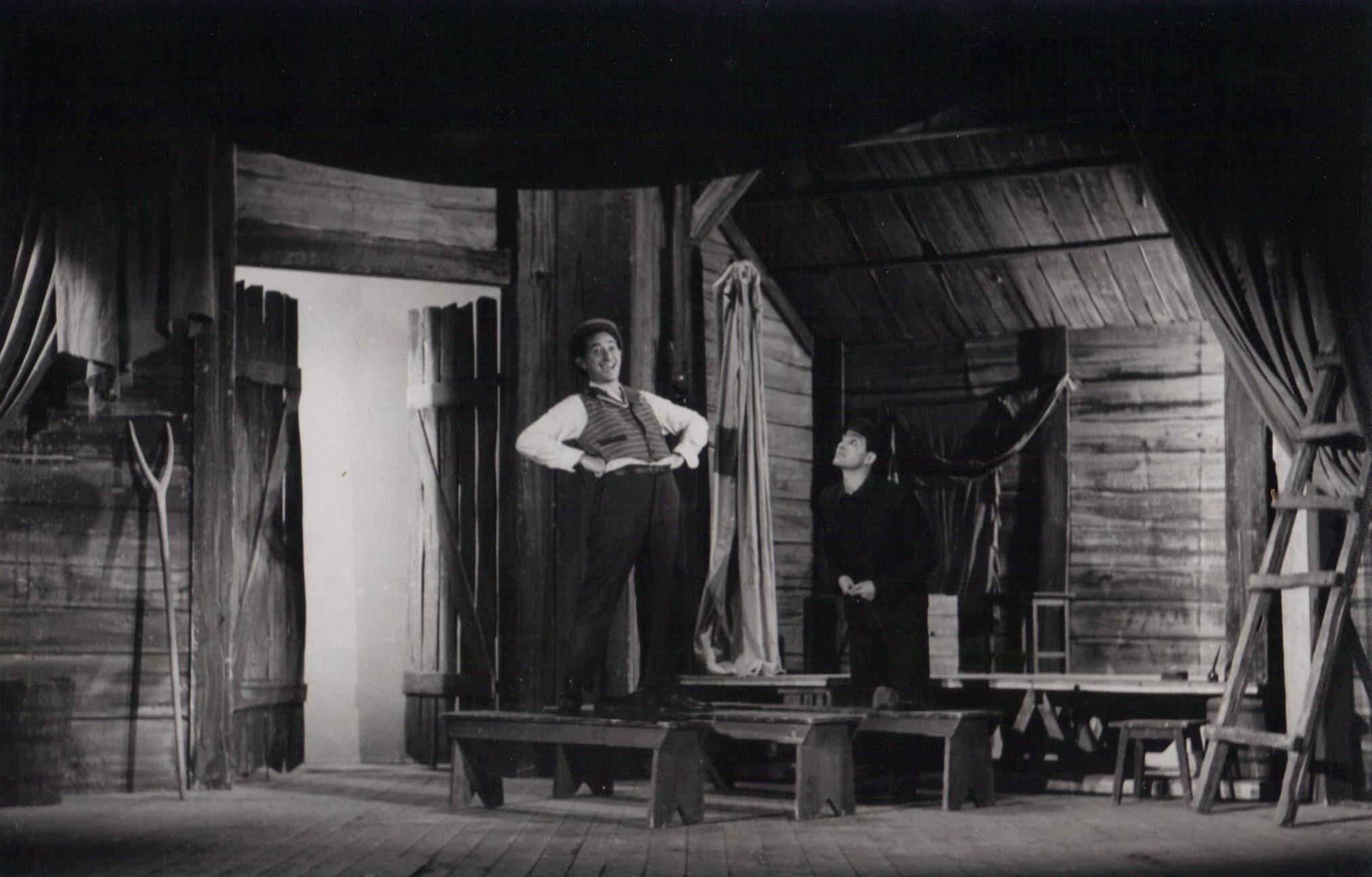Muzeul Teatrului Evreiesc în România
FOR ENGLISH SCROLL BELOW
Muzeul Teatrului Evreiesc în România – deschis la Iași, orașul în care s-a înființat, în 1876, primul teatru profesionist de limbă idiș din lume – își propune să reconstituie momentele importante ale teatrului evreiesc și să valorifice moștenirea instituțiilor de cultură reprezentative pentru acesta în spațiul românesc. Amplasat la parterul Casei Muzeelor, acesta cuprinde o expoziție permanentă distribuită pe 11 săli.
Sala Avram Goldfaden reflectă, printr-un caiet-manuscris, fotografii și afișe, nașterea teatrului idiș în lume și pe întemeietorul lui, Avram Goldfaden, considerat Părintele Teatrului Evreiesc. Două săli sunt intitulate Începuturile teatrului evreiesc (sec. XIX-XX) și conțin afișe și alte documente originale, care depun mărturie pentru spectacolele jucate de trupa lui Goldfaden prin țară, în perioada ulterioară reprezentațiilor de la Grădina „Pomul Verde” din Iași.
Expoziția permanentă continuă cu patru săli dedicate Teatrului Evreiesc de Stat Iași (1949-1963), care conțin afișe ale spectacolelor din primii ani de activitate ai acestei instituții, o instalație de păpuși, decoruri, programe de sală, un atelier de croitorie, machetele clădirii demolate în 1963 și o galerie cu fotografii ale colectivului artistic de la TES Iași.
Următoarele două săli sunt dedicate Teatrului Barașeum, un teatru evreiesc de revistă, deschis la București între anii 1941 și 1945. Se pot regăsi aici fotografii, replica unui costum al Sarei Kanner, afișe și programe de sală. Sala Teatrul Evreiesc de Stat București reflectă instituția culturală înființată în data de 1 august 1948, care funcționează și astăzi, având o activitate neîntreruptă. Obiecte de decor, fotografii, afișe, un ecran pe care vor fi proiectate filme și spectacole, vor putea fi descoperite în această încăpere.
Ultima sală este interactivă, decorată cu afișe ale spectacolelor evreiești din Iași și București, iar copiii se vor putea implica în diverse activități legate de teatru.
The Museum of Jewish Theatre in Romania
The Museum of Jewish Theatre in Romania – opened in Iași, the city where the first professional Yiddish language theatre in the world was founded in 1876 – aims to reconstruct important moments in the history of Jewish theatre and capitalize on the legacy of cultural institutions representative for it in Romania. Located on the ground floor of the House of Museums, it includes a permanent exhibition distributed over 11 rooms.
The Abraham Goldfaden room illustrates, through a manuscript notebook, photographs and posters, the birth of Yiddish theatre in the world and the life of its founder, Abraham Goldfaden, considered the Father of Jewish Theatre. Two halls are dedicated to the beginnings of Jewish theatre (19th and 20th centuries) and contain posters and other original documents, which testify to the performances of Goldfadenʼs troupe around the country, in the period after the performances at the “Pomul Verde” Garden in Iași.
The permanent exhibition continues with four rooms dedicated to the State Jewish Theatre of Iași (1949-1963), which contain advertising posters of the institutionʼs first years, a puppet show set, props, programmes, a costume workshop, models of the building demolished in 1963, and a gallery with photographs of the State Jewish Theatre of Iași company.
The next two rooms are dedicated to the Barascheum Theatre, a Jewish variety theatre, active in Bucharest between 1941 and 1945. Here the visitors can find photos, a replica of a costume belonging to Sara Kanner, playbills and programmes. The room dedicated to the State Jewish Theatre of Bucharest reflects the history of this cultural institution, established on August 1, 1948, still operating today, with an uninterrupted activity since establishment. Props, photographs, posters, and a screen on which movies and filmed shows will be projected are the main features of this room.
The last room is interactive, with the walls lined with posters of Jewish performances in Iași and Bucharest; here, children will be able to interact and engage in various theatre-related activities.






